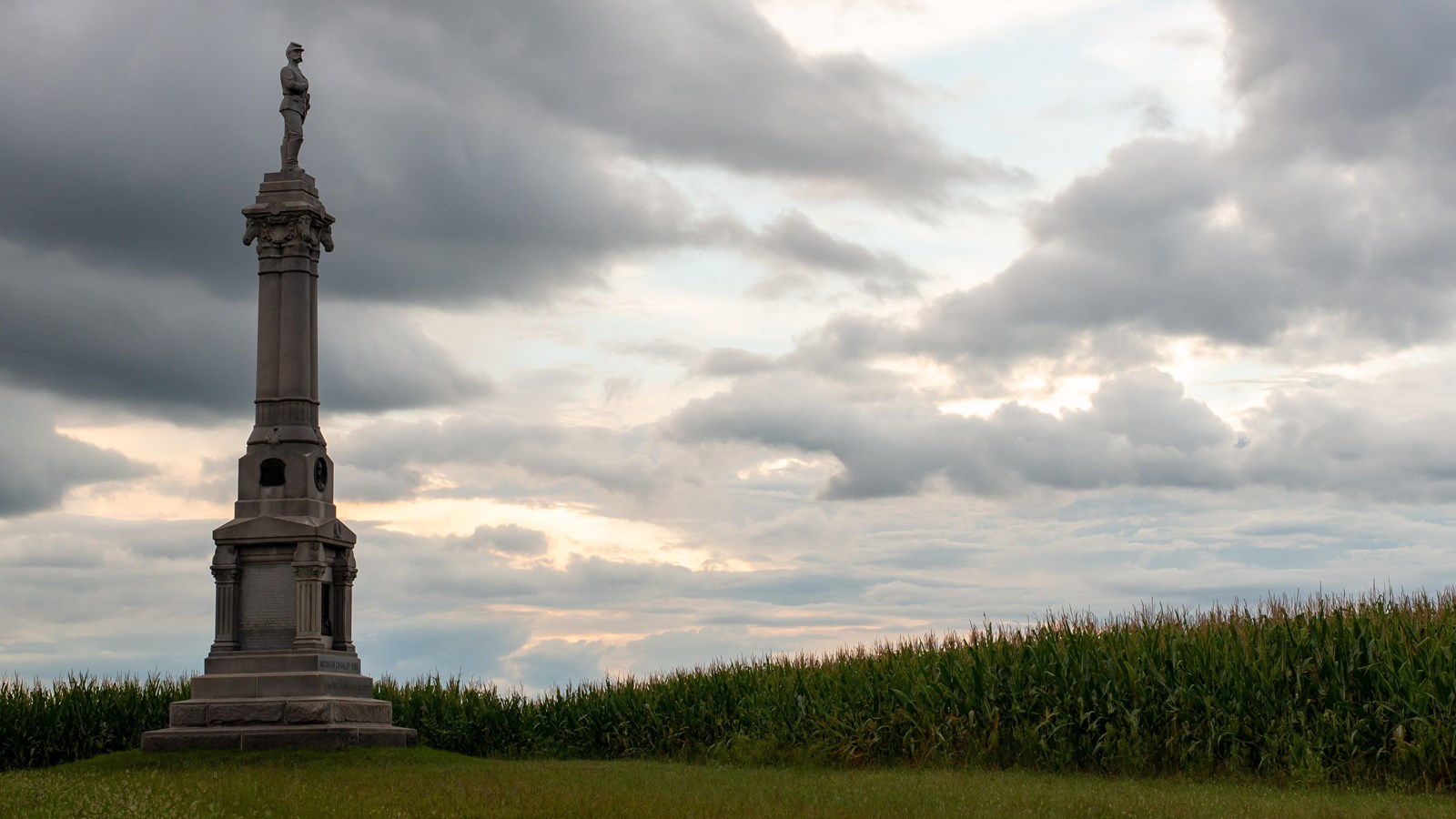Last updated: September 23, 2022
Place
Michigan Cavalry Brigade Monument

NPS Photo
Quick Facts
Location:
Gettysburg National Military Park
Designation:
Civil War Monument
Amenities
1 listed
Parking - Auto
On this stretch of open ground halfway between the opposing lines, the last charge by Lee’s and Hampton’s 3,600 horsemen was defeated. As the compact lines of horsemen crossed these fields heading for the Union positions along the Hanover Road (Stop 1), they were attacked on 3 sides by McIntosh’s and Custer’s 3,200 men.
As you face the Michigan Cavalry Brigade monument, the Union cavalry charged into the Confederates from your left front and right and broke their formations in bloody hand-to-hand combat. Unable to withstand these furious attacks upon their front and flanks, the Confederates soon retreated to Cress Ridge. The heaviest fighting of the day was over.
A Union officer recalled, “As the charge was ordered the speed increased, every horse on the jump, every man yelling like a demon. As the opposing columns drew nearer and nearer, each with perfect alignment, every man gathered his horse well under him and gripped his weapon the tighter.” A Confederate officer in Lee’s Brigade described the fighting as “hand to hand, blow for blow, cut for cut, an oath for oath, it seemed as if the very furies from the infernal regions were turned loose on each other.”
Several hundred yards to your left front across the tour road is the Gregg Cavalry Shaft erected in 1884. It is the only monument that commemorates the services of both Union and Confederate cavalry at Gettysburg.
After almost 2 hours of continuous fighting the contest for the Lott and Rummel Farms had been decided. Stuart fell back onto Cress Ridge and remained there until nightfall. Gregg, although outnumbered, was able to stubbornly resist the best of the Southern cavalry and protect the Union flank.
The Union had 254 casualties, the Confederates lost 450. July 3, 1863 had proven the Cavalry could win victories.
As you face the Michigan Cavalry Brigade monument, the Union cavalry charged into the Confederates from your left front and right and broke their formations in bloody hand-to-hand combat. Unable to withstand these furious attacks upon their front and flanks, the Confederates soon retreated to Cress Ridge. The heaviest fighting of the day was over.
A Union officer recalled, “As the charge was ordered the speed increased, every horse on the jump, every man yelling like a demon. As the opposing columns drew nearer and nearer, each with perfect alignment, every man gathered his horse well under him and gripped his weapon the tighter.” A Confederate officer in Lee’s Brigade described the fighting as “hand to hand, blow for blow, cut for cut, an oath for oath, it seemed as if the very furies from the infernal regions were turned loose on each other.”
Several hundred yards to your left front across the tour road is the Gregg Cavalry Shaft erected in 1884. It is the only monument that commemorates the services of both Union and Confederate cavalry at Gettysburg.
After almost 2 hours of continuous fighting the contest for the Lott and Rummel Farms had been decided. Stuart fell back onto Cress Ridge and remained there until nightfall. Gregg, although outnumbered, was able to stubbornly resist the best of the Southern cavalry and protect the Union flank.
The Union had 254 casualties, the Confederates lost 450. July 3, 1863 had proven the Cavalry could win victories.
